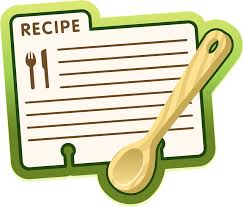 One of the most popular posts on this blog is called The Ideal Thank-You Letter Went Out Today! It lists seven ingredients you need to stir in to your thank-you letter to make sure donors will read it, appreciate it, and remember it when you ask them to give again.
One of the most popular posts on this blog is called The Ideal Thank-You Letter Went Out Today! It lists seven ingredients you need to stir in to your thank-you letter to make sure donors will read it, appreciate it, and remember it when you ask them to give again.
It’s nearly halfway through 2016. I’ve made some donations this year, and received some thank-you letters. Here’s how they compare to the ideal, on all seven points.
1) Called me by name.
Happily, 100% of the TY’s my wife and I received got this right. Nobody said, “Dear friend.” 10% started out “Dear Mr. and Mrs. Fischman,” and another 10% called us by our first names and last name. 80% used our first names, like friends.
2) Confirmed how much I gave you.
Again, 100%. This is progress! But that’s where the good news ends.
3) Told me how my gift would make a difference.
Nearly all the letters bragged about the organization’s work and cast me as a very junior partner. I read a lot of general statements about how the organization couldn’t do its work without me. They were flattering, but not very convincing.
About a third of the letters included statistics about how many people the organization helped–but I know my $50 is not “providing care to 30,000 patients.” So, that statistic doesn’t mean much to me.
One in ten of the letters reminded me of the problem we both worried about and the solution my donation could help provide: in other words, the things that made me want to give to the organization in the first place. Thank you to those who did! You made me feel good about my gift all over again.
Only one in ten really got it right. Those were the nonprofits who drew a direct connection between my gift and a specific result I cared about. Here’s my favorite example, from Wellstone Action:
Every time a Wellstone-trained progressive convenes a press conference in Oregon, or turns hundreds of young people out to vote in Wisconsin, or is elected to public office in rural Idaho, they have you to thank.
4) Illustrated my impact with a story.
None. Zip. Zilch. Not one of the thank-you letters I received used storytelling to make me feel and remember what my gift accomplished…or why I should I give again.
Nonprofits, I’m disappointed in you! Let me help you figure out how to recognize, collect, recall, and use good stories in your thank-you letters in the future. Sign up for a webinar, Where’s the Story Here? Nonprofit Storytelling for Fun and Profit.
5) Included a photo or image.
I saw more organizations getting visual in their TY’s this year–but still only 20%. And only half of them used an image to show me the people I’m supporting, and captioned them in their own words. That was what I appreciated most. (I’m talking about you, Interfaith Worker Justice!)
6) Told me about how else I can help.
30% of these letters included the dreaded “thask” (a thank-you and a new “ask” on the same page). And I know some organizations raise more money in the short term with this tactic–but in the long run, you will burn through donors instead of making them loyal friends.
I liked the organizations that gave me a chance to see my money at work as the year goes on, on their websites.But that was about them. What could I do, besides give more money?
The Rosenberg Fund for Children’s Jennifer Meeropol “enclosed a card and sticker for our campaign calling on President Obama to exonerate my grandmother, Ethel Rosenberg. You can learn more and sign & share the petition at www.rfc.org/ethel.” That’s the call to action I’m talking about!
7) Signed it by hand, and wrote something just for me.
All of these thank-you letters included photocopies of a personal signature. As far as I could tell, none of them were actually signed on the spot. That might be too much to expect from a national organization, but if you’re a local organization with a smaller mailing list, this might be your chance to stand out from the crowd!
Only 20% of the organizations had added a personal note to the thank-you letter. This dismays me. Sure, it’s harder to send a TY in a timely manner AND personalize it–but it’s worth doing both. And it gets easier if you have a good donor database and a story bank, right at hand.
Get ready now to send out the ideal thank-you letter this year!
